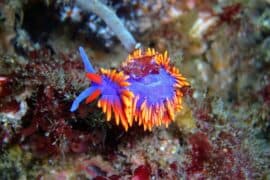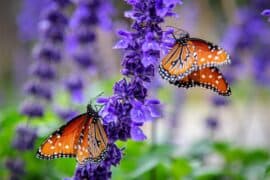Dark-eyed Junco
(Junco hyemalis)

Description
The Junco hyemalis, commonly known as the Dark-eyed Junco, is a small sparrow native to North America. These birds are known for their distinctive appearance, with a gray or brown head and back, white belly, and a black or slate-colored hood on their head. In this article, we will explore the unique characteristics, behaviors, and habitats of the Dark-eyed Junco. Physical Characteristics The Dark-eyed Junco is a small bird, measuring around 5-6 inches in length and weighing between 18-30 grams. Males and females have similar physical characteristics, with males having slightly longer tails. Their plumage can vary depending on their geographic location. In general, the Junco hyemalis has a gray or brown head, back, and wings, and a white belly. The color of their plumage can range from a pale gray-brown to a rich, warm brown. One of the most recognizable features of the Dark-eyed Junco is the black or slate-colored hood that covers their head. This hood extends down to their upper breast and can vary in size and shape. Their beaks are short and conical, designed for cracking open seeds and insects. Their legs and feet are a pale pink color, and their eyes are dark, almost black. Habitat and Range The Junco hyemalis is a small sparrow native to North America. Its range extends from Alaska to Mexico, and it is a year-round resident in much of North America. The Dark-eyed Junco is typically found in forested areas, but it can also be seen in open fields, parks, and suburban gardens. During the breeding season, which typically occurs from April to July, Dark-eyed Juncos can be found in coniferous and mixed forests. They build their nests on the ground, usually under a bush or shrub, using twigs, grasses, and moss. Outside of the breeding season, Dark-eyed Juncos form flocks and move to lower elevations. These flocks can consist of several hundred birds and often include other species of sparrows and finches. They are also known to visit bird feeders in suburban and urban areas during the winter months. Behavior The Dark-eyed Junco exhibits a variety of behaviors that are fascinating to observe. Here are some of the behaviors commonly associated with this bird: Foraging Behavior: Dark-eyed Juncos are primarily seed-eaters, and their diet includes a variety of seeds, including those from grasses, weeds, and trees. They are also known to eat insects, especially during the breeding season when they need extra protein to feed their young. Juncos are often observed foraging on the ground, using a behavior known as "double-scratching." This behavior involves the bird hopping forward and then back, scratching the ground with both feet at each stop. This behavior helps them uncover seeds and insects hidden beneath the leaf litter. Vocalizations: Dark-eyed Juncos have a variety of vocalizations that they use to communicate with one another. Their songs are typically simple, musical trills or whistles, while their calls are more harsh and include a variety of chirps and buzzes. They use these vocalizations to establish territories, attract mates, and communicate with other members of their flock. Courtship Behavior: During the breeding season, male Dark-eyed Juncos perform courtship displays to attract mates. These displays can include hopping, fluttering their wings, and spreading their tail feathers. They also sing elaborate songs and may bring food offerings to the female as part of their courtship ritual. Nesting Behavior: Dark-eyed Juncos build their nests on the ground, usually under a bush or shrub, using twigs, grasses, and moss. Both male and female Juncos participate in nest-building and incubation of the eggs. They typically lay 3-5 eggs, which hatch after about 12-13 days. After hatching, both parents continue to care for the young, feeding them insects and other small prey. Flocking Behavior: Outside of the breeding season, Dark-eyed Juncos form flocks and move to lower elevations. These flocks can consist of several hundred birds and often include other species of sparrows and finches. Flocking behavior helps Juncos find food and avoid predators, and it also provides social interaction and protection from the elements. Diet The Dark-eyed Junco is primarily a seed-eater, but it also includes insects in its diet, especially during the breeding season when they need extra protein to feed their young. Juncos have a diverse diet that includes seeds from grasses, weeds, and trees. They are known to feed on a variety of seeds, including those from dandelions, chickweed, ragweed, and conifers. In the winter months, they also visit bird feeders, where they can be observed feeding on seeds such as millet, sunflower seeds, and nyjer. Insects also form an important part of the Dark-eyed Junco's diet. During the breeding season, they feed on a variety of insects, including caterpillars, beetles, and grasshoppers. They use their short, conical beaks to crack open the exoskeletons of insects and extract the protein-rich meat inside. Dark-eyed Juncos are also known to engage in a behavior called "double-scratching," which involves the bird hopping forward and then back, scratching the ground with both feet at each stop. This behavior helps them uncover seeds and insects hidden beneath the leaf litter. Overall, the Dark-eyed Junco's diet is varied and adaptable, allowing them to survive in a wide range of habitats, from forested areas to suburban and urban environments. Breeding The breeding season Junco hyemalis typically occurs from April to July. During this time, male Juncos perform courtship displays to attract mates, which can include hopping, fluttering their wings, and spreading their tail feathers. They also sing elaborate songs and may bring food offerings to the female as part of their courtship ritual. Dark-eyed Juncos are monogamous and pair up for the breeding season. Once a pair has formed, they work together to build their nest. The nest is typically located on the ground, usually under a bush or shrub, and is made of twigs, grasses, and moss. After the nest is built, the female lays 3-5 eggs, which are incubated by both the male and female for about 12-13 days. Once the eggs hatch, both parents continue to care for the young, feeding them insects and other small prey. The young Juncos leave the nest after about 9-13 days and are able to fly shortly thereafter. Dark-eyed Juncos typically produce one or two broods per breeding season, and some pairs may produce a third if conditions are favorable. In some cases, pairs may return to the same nesting site year after year. Overall, the breeding behavior of the Dark-eyed Junco is characterized by elaborate courtship displays, cooperative nest-building, and shared parental care. Conservation Status The Dark-eyed Junco is not considered threatened, with a population estimated at around 630 million individuals. However, like many bird species, the Dark-eyed Junco faces a number of threats to its populations. One of the biggest threats to the Dark-eyed Junco is habitat loss and fragmentation. As forests are cleared for development and agriculture, the bird's nesting and foraging habitat is lost, which can reduce its population. Climate change also poses a threat to the Dark-eyed Junco, as changes in temperature and precipitation patterns can affect the bird's breeding and foraging success. In some regions, the Dark-eyed Junco is also considered a pest, especially in agricultural areas where they can damage crops. However, they also play an important ecological role as seed dispersers and insect predators. Conservation efforts for the Dark-eyed Junco focus on protecting its habitat and promoting sustainable land use practices. This includes measures such as maintaining forested areas, preserving natural areas, and creating buffer zones around nesting sites. The public can also support the conservation of the Dark-eyed Junco by reducing their use of pesticides and supporting sustainable agriculture practices that reduce harm to bird populations. Overall, the Dark-eyed Junco is not currently considered threatened, but continued monitoring and conservation efforts are necessary to ensure the survival of this important North American bird species. Conclusion The Dark-eyed Junco is a fascinating bird with unique physical characteristics and behaviors. Their distinctive appearance and widespread distribution make them a common sight in many North American habitats. While they are not considered threatened, the Dark-eyed Junco faces challenges from habitat loss and climate change. It is important to continue monitoring their populations and protecting their habitats to ensure their survival for generations to come.
Taxonomic tree:







